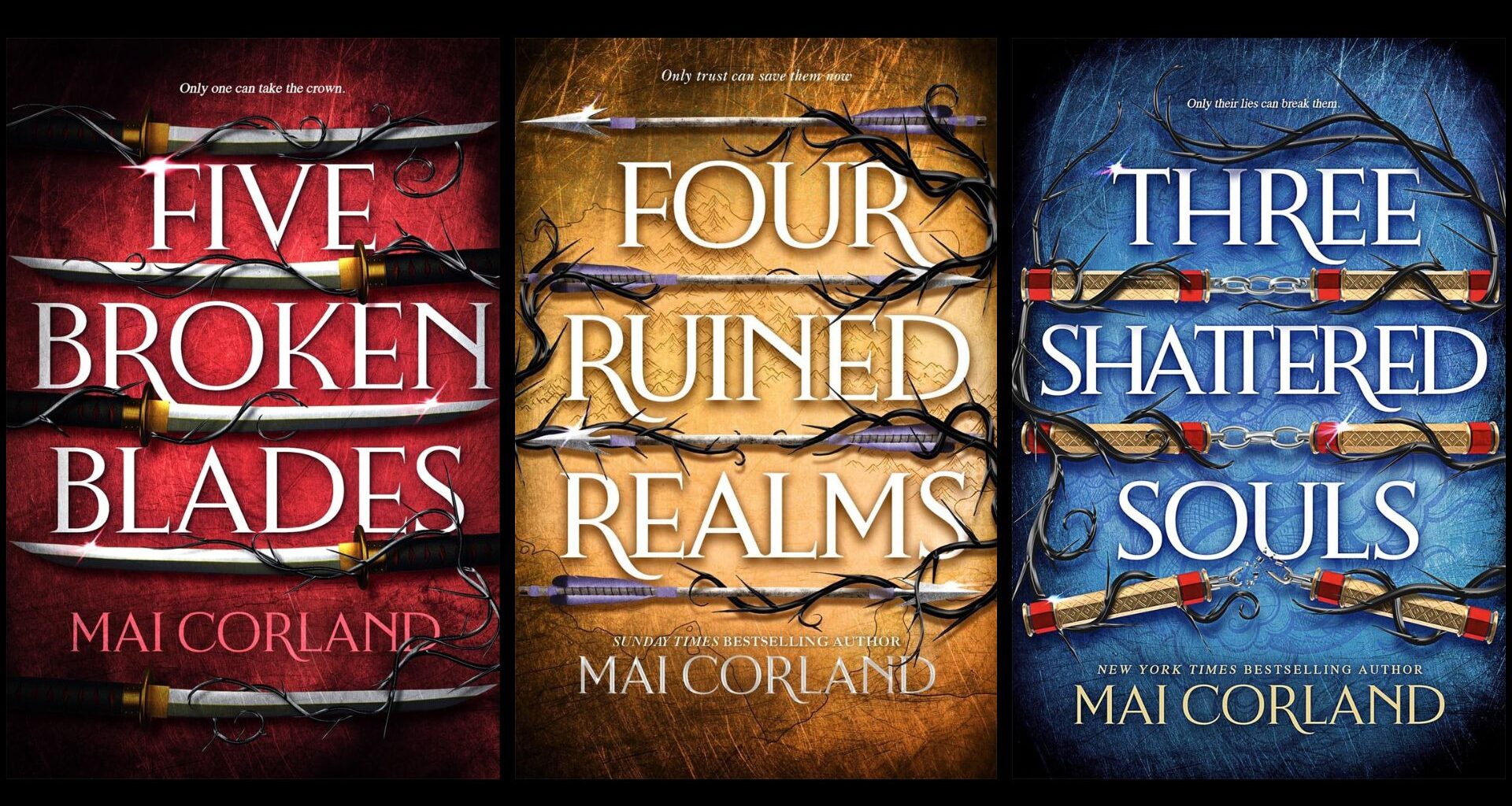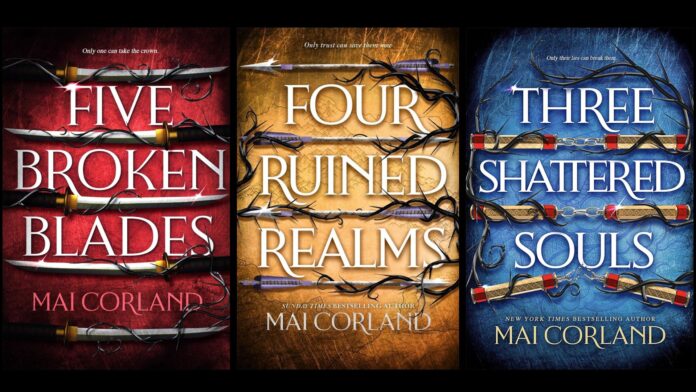The Broken Blades is a fantasy trilogy by Mai Corland, with book one, Five Broken Blades, and book two, Four Ruined Realms, out on the shelves, and the third and final instalment, Three Shattered Souls, was released 15 July 2025.
In a fictional land where four realms coexist in precarious peace, six characters (despite the title of the first book) are summoned to carry out an impossible mission: to kill the god king. Each of them has a unique skill that is necessary to the mission and all of them are willing to risk everything to succeed.
The strength of the first two books lies in the story and in the dynamics between the characters. The summary promises danger and intrigue, and Corland certainly delivers on both counts. Cliffhangers and unexpected twists keep the readers engaged and eager to learn what happens next.
As the story begins, the characters are scattered around the realms, mostly strangers to each other. Corland cleverly leads them through the journey that sees their paths converge, intersecting like pieces of a puzzle.
Throughout both books, Corland courageously touches themes of violence and exploitation. Child abuse is tolerated, genocide discussed, women are often treated as sexual objects. Many readers will frown upon the brutality of some scenes, but the depiction of violence, in all its forms, is not gratuitous. It portrays an unfair and harsh reality we are sadly familiar with. The characters we follow are the product of this corrupted and chaotic world. They kill with no mercy and mostly no remorse in the name of what they believe is the greater good. Whilst their enemies are motivated by power and greed, our protagonists are driven by love and a need for belonging. Yet, these forces compel them to carry out unspeakable acts, posing the question of when, if ever, the end can justify the means.
The story is narrated in the first person with the six characters taking turns in sharing their points of view. At first, we believe we deeply know the characters because we are let into their secrets. However, we soon realise that most of them keep secrets from us too and we can trust none of them any more than the rest of the characters can. Corland builds this tension brilliantly. She makes us feel a connection with the characters one moment and completely distrust them the next. This becomes more accentuated in the second book, when the stakes get higher. What the characters were trying to protect turns into the very thing that makes them vulnerable to their enemies, forcing them to struggle between friendship, loyalty and duty.
The use of multiple narrators, however, turns into a double-edged sword. If on one hand it allows us to experience the events from different perspectives and fill the gaps left by other characters, the short chapters prevent the story from flowing smoothly. As tension begins to rise, the action is interrupted, leaving the readers to feel like detached witnesses of events. Corland remediates this in the second book, but only partially, revealing at once an effort to elevate the action, and the difficulty to juggle six different perspectives.
The challenge of mastering the multiple-narrator technique is also evident in the monotonous expression of the thoughts and inner struggles of the characters. Some chapters circle around the same focal points in a way that adds nothing to the story or to the characters’ development. The language itself is repetitive and lacks depth. Not only does it limit the introspection that first-person narration can offer, but it also fails at times to provide an adequate description of the surroundings. The air, the colours, the sounds – there is little sensory experience, leaving us to feel as if we had a paintbrush and very little colour to paint.
Overall, the story is original and engaging and I am left with the curiosity of learning what happens in the final volume. The reading, however, is not smooth and can become tiring. The reader may feel at times compelled to quickly scan some pages to get past the monologues and find the way back into the action. The third instalment will show if Corland can rise to the challenge that her complex world-building poses and maximise the technique of first-person narration.
Words by Flavia Sangers-Di Natale

